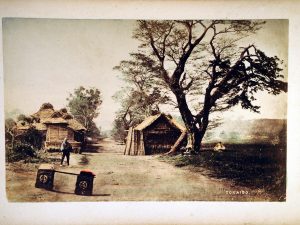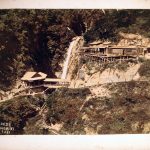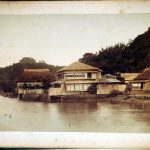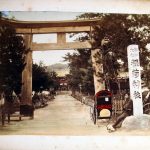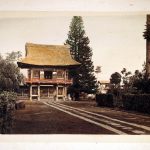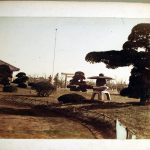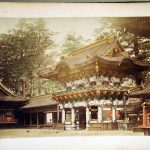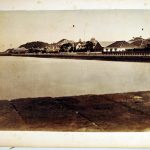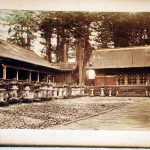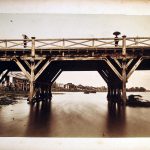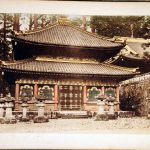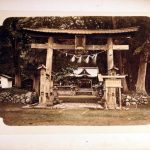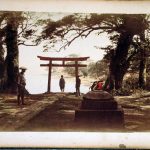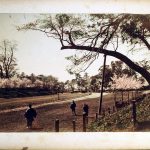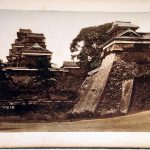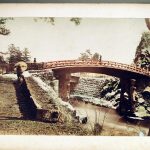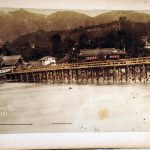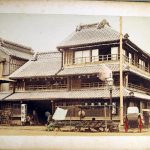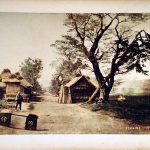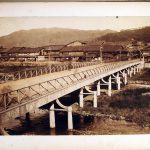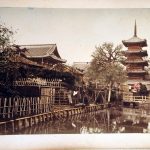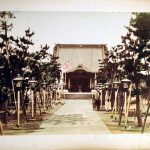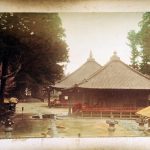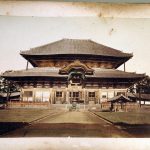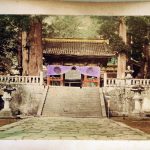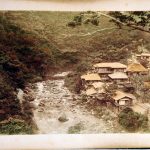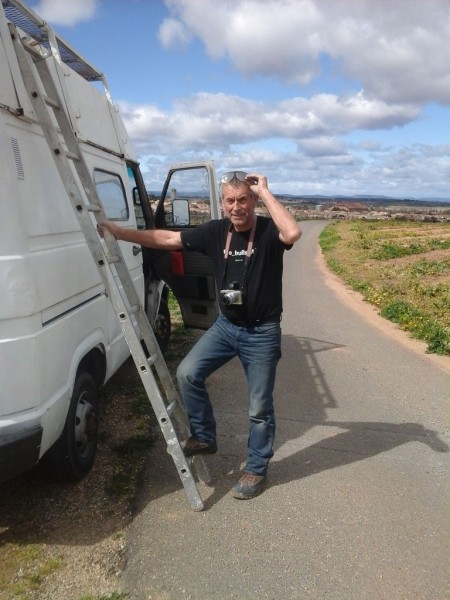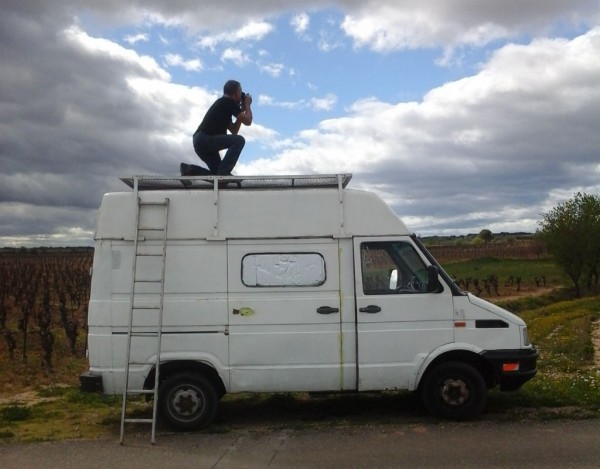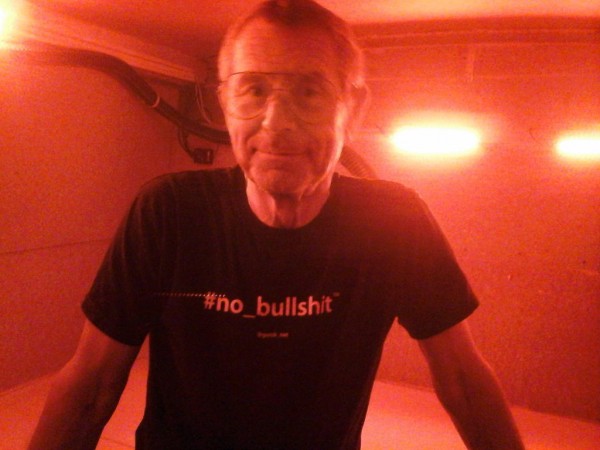I have a dream – to travel to Japan and visit each of the places where an album of collodion photographs were taken and to take photographs of each scene. I have an original, Asanuma, Japanese half plate camera of the period over 120 years ago.
My dream is to go to Japan, research where these photos were taken and to take a photo, using the same wet plate collodion technique of the place as it is now. Then to print the photos on hand made collodion paper. Hand colouring is beyond my experience (at the moment)
The album is 50 pages with original half plate photographs which were probably sold to a European visiting Japan in the late 19th century. Like a concertina, 25 images are, on one side, of landscapes and street photos and 25 on the other side of local well dressed ladies and girls. I have a small collection of what are called “Geisha Photos” and I do not think any of the photos are of Geisha, one I think may be the wife of the photographer.
A lot of research is needed to identify the places but a few have writing on, in English, which makes me suspect some were for foreign visitors.
Here is a gallery of the photos in the album, click on each image to see a larger picture.
- 1 -Hand colored collodion print – Japan, c1890, from album of 50 photos – 1
- Hand colored collodion print – Japan, c1890, from album of 50 photos – 2
- Hand colored collodion print – Japan, c1890, from album of 50 photos – 3
- Hand colored collodion print – Japan, c1890, from album of 50 photos – 4
- Hand colored collodion print – Japan, c1890, from album of 50 photos – 5
- Hand colored collodion print – Japan, c1890, from album of 50 photos – 6
- Hand colored collodion print – Japan, c1890, from album of 50 photos – 7
- Hand colored collodion print – Japan, c1890, from album of 50 photos – 8
- Hand colored collodion print – Japan, c1890, from album of 50 photos – 9
- Hand colored collodion print – Japan, c1890, from album of 50 photos – 10
- Hand colored collodion print – Japan, c1890, from album of 50 photos – 11
- Japan circa 1890, hand coloured collodion photograph -12
- Hand colored collodion print – Japan, c1890, from album of 50 photos – 13
- Hand colored collodion print – Japan, c1890, from album of 50 photos – 14
- Hand colored collodion print – Japan, c1890, from album of 50 photos – 15
- Hand colored collodion print – Japan, c1890, from album of 50 photos – 16
- Hand colored collodion print – Japan, c1890, from album of 50 photos – 17
- The Tokaido road, Japan circa 1890 – Hand colored collodion print , from album of 50 photos – 18
- Hand colored collodion print – Japan, c1890, from album of 50 photos – 19
- Hand colored collodion print – Japan, c1890, from album of 50 photos – 20
- Hand colored collodion print – Japan, c1890, from album of 50 photos – 21
- Hand colored collodion print – Japan, c1890, from album of 50 photos – 22
- Hand colored collodion print – Japan, c1890, from album of 50 photos – 23
- Hand colored collodion print – Japan, c1890, from album of 50 photos – 24
- Hand colored collodion print – Japan, c1890, from album of 50 photos – 25
